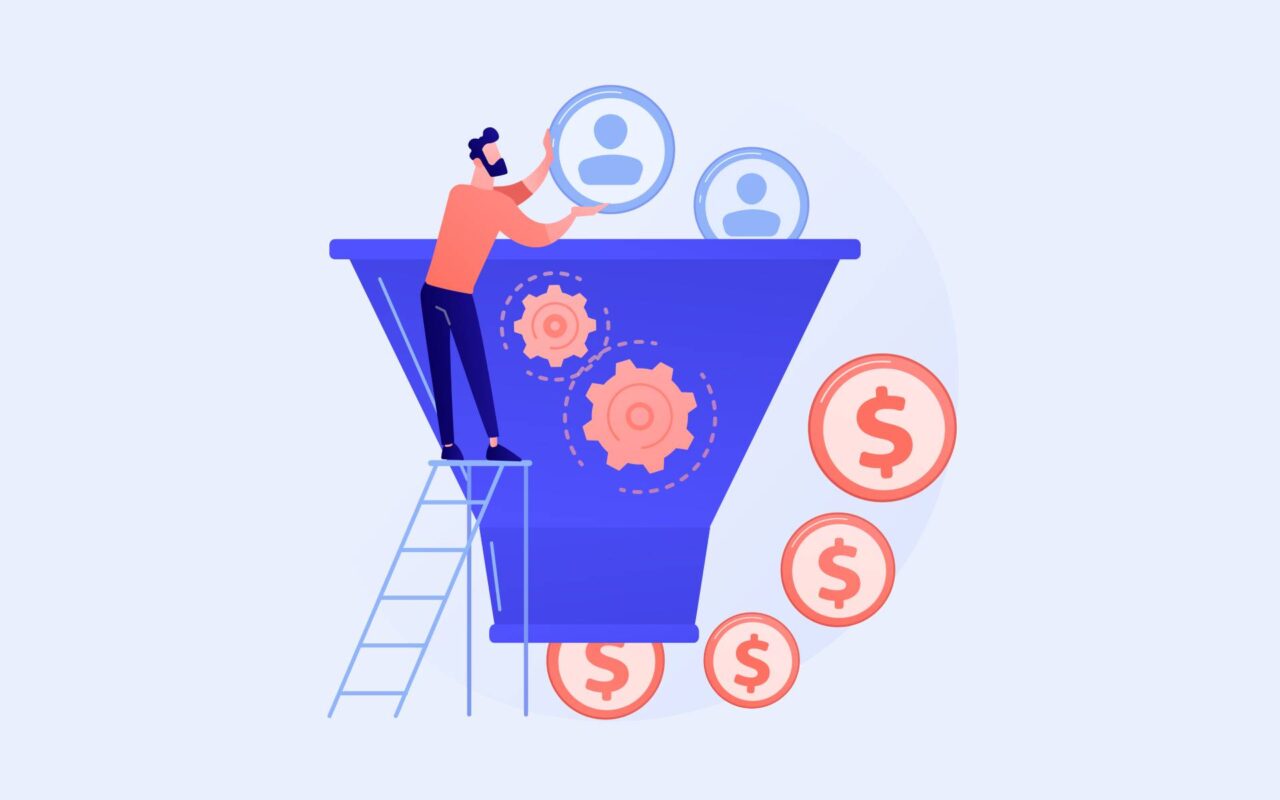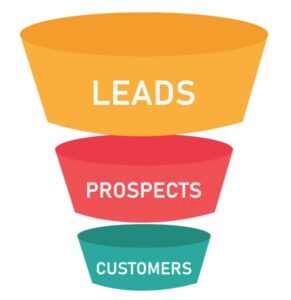The over 100-year-old Sales Funnel model is an unsurpassed concept of analyzing the purchasing process. During that time, of course, it went through a development, during which it was criticized mainly for the fact that customers just flowed through it. Therefore, there was a high time for Customer Lifetime Value, which, on the contrary, tries to retain customers.

Every company sometimes makes a sensational catch. But the best ones gain new opportunities and turn them into sales on a regular basis. Some of them may have historically had good luck, but the vast majority has relied on a sophisticated analysis of customers' purchasing processes. And it is theoretical tools such as the Sales Funnel and Customer Lifetime Value that help companies identify weaknesses in the purchasing process.
Inventing Sales Funnel
Although the Sales Funnel was born in 1898, it is still a valid model that follows the individual stages of the purchasing process. The basic ones that no funnel can do without are Leads, Prospects and Customers. In other words, we follow the path of a potential customer to the desired purchase. Or possible lack of interest. The only thing that the Sales Funnel has in common with the one in the kitchen is the shape, because a part of the total number of potential customers in each subsequent phase always falls out. Therefore, the dream of every company is to have the widest possible funnel throat.

Conversion – get as much as you can
Why should one actually monitor the individual phases of the trade? They tell us where the weak points are. Therefore, all the innovations that the Sales Funnel has gone through in more than 100 years of existence add new phases (and often rename them). The business has simply undergone an incredible development during that time and the purchasing process needs to be monitored more profoundly. However, the principle remains the same.
The basic functions of the funnel are conversions (or Close Rate, if you wish). Funnels and funnel software determine which part of potential customers passed through the funnel and which flew away through the throat. So how do you track specific conversions to help identify as many flaws as possible?
Conversion rate of individual phases
The overall rate between the number of inquiries and the number of purchases is a clear indicator of whether the business is doing well. But it says nothing about specific mistakes. If you keep track of how many inquiries reach the stage where customers are thinking about buying, and how many of them will eventually buy, you can better define the errors.
Sometimes companies lose customers at the very beginning due to the delayed response of sales reps to queries from the company website. In this case, try to automate inquiries from the web form. Or don‘t customers respond enough to the offer? It probably needs to get improved. But how? Before you start a wild discount, try to see if the funnel is flowing elsewhere.
TIP: By assigning a numerical value to the individual phases of your Sales Funnel, the probability of the deal being completed, you will be able to more accurately forecast your future sales. The percentage of probability is then enough to multiply the potential value of the business opportunity.
Personnel division
Businesses that have several sales reps merchants can track the conversion rate individually. It may turn out that someone manages to bring a lot of new customers, but unlike a colleague, they don‘t close the deals. The solution may be training, for example, but the problem may still lay elsewhere.
Territorial division
The division of sales into individual territories can be applied to the entire company, but also to individuals. Sometimes even successful sales reps can have troubles outside their area. Maybe they have a different accent, they don't know local customs, or they simply miss what the locals react negatively to. If everyone has poor results in the region maybe there is strong competition in the district.
Seasonal division
There are products and services that go on sale all year round, but for seasonal ones, it is advisable to monitor success throughout the purchasing process. For example, a manufacturer of advertising calendars needs to process as many orders as possible by the end of the year. The old calendar is, of course, useless. But too hasty planning can also harm the sales. Many companies will not want to buy the calendar for next year in the spring. Long-term analysis of responses to offers can help determine the best timing.
But sometimes even a detailed analysis of the Sales Funnel doesn't work. The funnel has one disadvantage, which some companies almost do not have to think about but for others it can be absolutely essential.
Disadvantage of the Sales Funnel
The Sales Funnel has long been criticized for focusing only on numbers – number of closed deals and how much money we made. If the customer is satisfied and our solution helped is not an issue here. The Sales Funnel doesn’t build the reputation of a company that delivers world-class products and services. John Hall from Influence & Co. Depicted this in his article at Forbes: “Too many companies see customers as gatekeepers to wallets; meanwhile, customers feel ignored at best – and insulted at worst – when the journey ends.“
Theoretically, this means that whatever falls out of the funnel should be picked up and thrown back into it. But is it really the right mind-set? For a potential customer who has been discouraged by something, it will be necessary to choose a different strategy, and the existing ones would again appreciate the individual approach. The funnel is missing something.
Meet Customer Lifetime Value
So far, the original Sales Funnel meets the needs of real estate agencies, suppliers of photovoltaic power plants and other companies, whose solution is the exact opposite of FCMG. A customer who has just bought a new will probably not buy another one in a month. But what about other companies?
For example, office supply dealers or financial advisors provide services to their customers on a regular basis. Such companies often naturally realize that completing an order does not end the relationship with the customer. On the contrary. It needs to be taken care of because it can bring long-term profit. And this profit is hidden under the Customer Lifetime Value.
How to determine Customer Lifetime Value?
The term Customer Lifetime Value is basically all-encompassing. It determines the amount of potential revenue that each individual customer can bring in the coming months or years. The CLV calculation itself is not complicated:
CLV = average value of the purchase (in a specific time range) X average number of purchases (during the same time period) X life of the customer (average number of years in which one customer still buys from you)
The Customer Lifetime Value is especially useful in direct comparison to the costs associated with reaching a new customer. CLV will help you determine which customers are VIPs and worth every minute of your time. Thanks to CLV, you can also find out which products are the most profitable or which products VIP customers want.
Sales Funnel or Customer Lifetime Value?
Now that we know Customer Lifetime Value isn’t it time to drop the old worn-out funnel and focus on building a long-term relationship with existing customers? As always, the truth is somewhere in the middle and neither approach can be completely ignored.
The Sales Funnel has historically proven to be a great tool for gaining new customers and optimizing this process. No company in the world can do without it. However, experience shows that for some types of business, existing customers are more important than breaking records in the number of new customers. The success of the whole company often depends on some VIP customers. For such companies, a comfortable tool such as Customer Lifetime Value is far more important. The customer who brings the most money to the company's budget should be pampered.
For most companies, apart from some of the above examples, which are located on opposite poles of the spectrum, the issue of acquiring new customers and caring for the well-being of the existing ones is important. The choice between a Sales Funnel and Customer Lifetime Value should therefore not be A or B, but a balance between the two approaches.











